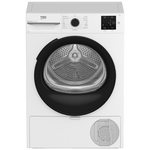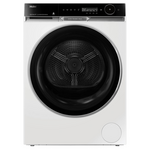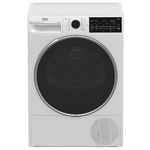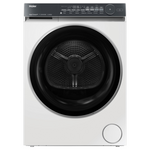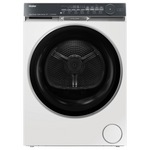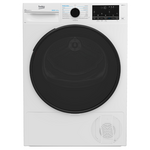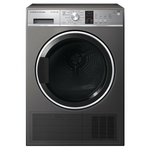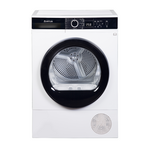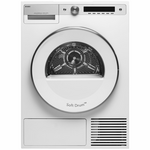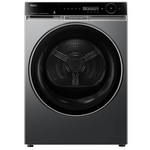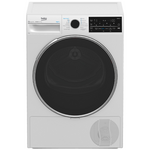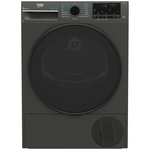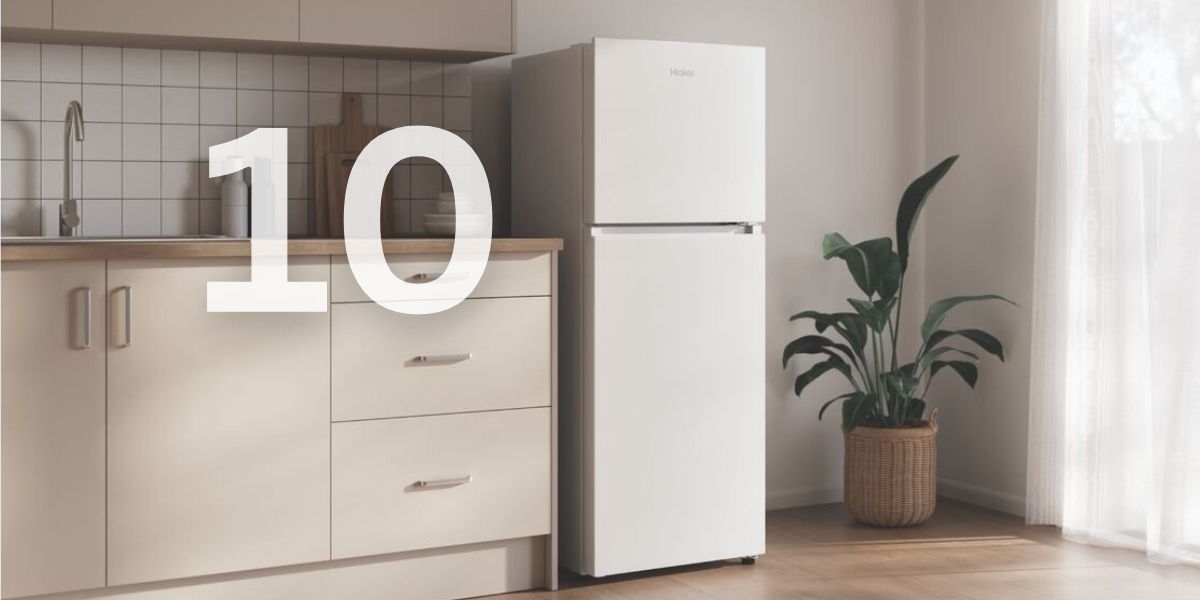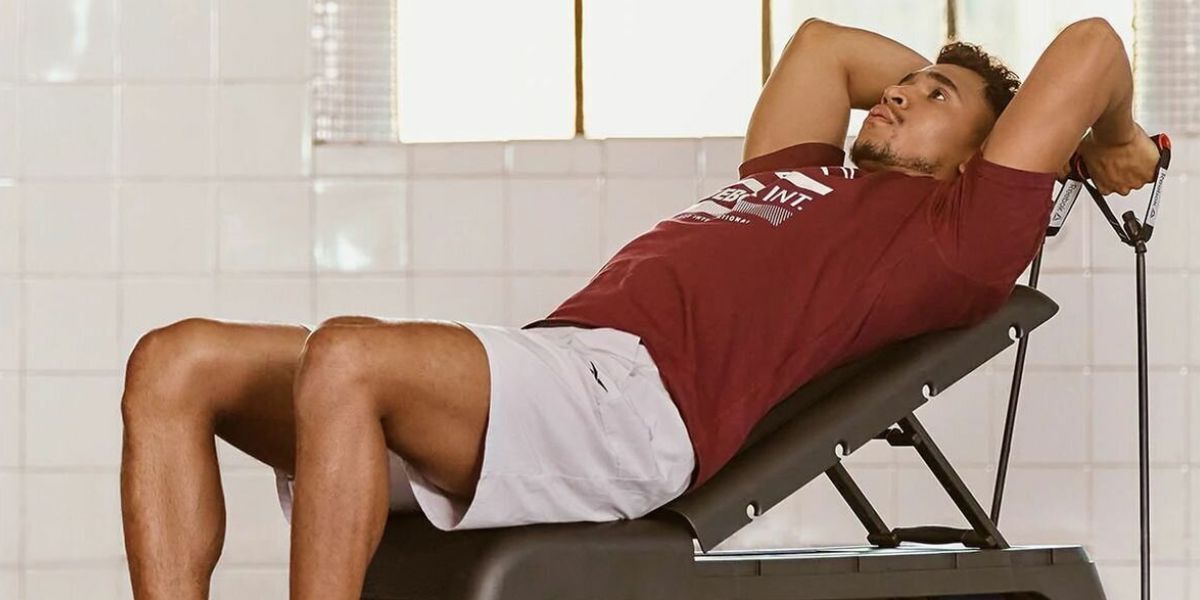
Laundry
Keep your wardrobe fresh and dapper with smart ideas for better washing and drying.
LAUNDRY | 5 FEBRUARY, 2025
9 MIN READ
How to choose the right size dryer
Simplify laundry day by matching dryer capacity to family size and damp washing weight.

You’ve just hauled 12kg of damp laundry out of the washing machine ready for drying, but your old vented dryer has other ideas - beeping in protest as you play the guessing game of what 5kg feels like. Now you’re stuck juggling damp loads, turning a simple task into an all-day chore resulting in a steamy wet laundry room. Surely there’s a better way? Indeed there is.
When it comes to buying a new dryer, you don’t want to be frustrated at its inability to handle the volume of wet laundry your household generates. At the same time, you need it to fit in its designated spot. Here’s how to choose the right dryer capacity for your household, while keeping energy efficiency and running costs in mind.
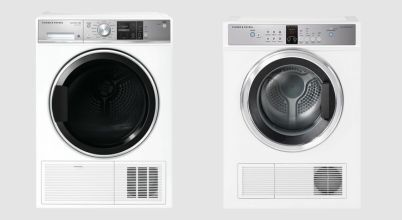
Heat pump vs vented dryers
Before diving into sizes, it's important to understand the main types of clothes dryers available in Australia. Older style vented dryers use hot air to dry clothes and expel moist air outside - or inside your laundry if, like many people, you don’t have adequate ventilation set up. Heat pump dryers, on the other hand, use newer heat pump technology to recycle warm air and remove moisture more efficiently, so they don’t need external venting or an exhaust fan.
Using significantly less energy than vented dryers, heat pump dryers typically have between 8 and 10-star energy ratings compared with vented dryers’ 2 star ratings.
Heat pump models usually cost more upfront than vented dryers, but their lower running costs can offset this higher purchase price over their lifetime (or much sooner if you use a dryer multiple times a week).
The lower temperatures of heat pump dryers mean they have a gentler drying action which can be better for fabric - but it does mean they take longer than vented models to dry clothes. The technology also makes heat pump dryers too heavy to be wall mounted, though they can usually be stacked on top of front load washing machines if you don’t have a lot of floor space in your laundry.
Perhaps most importantly though, if you’re reading this article, heat pump dryers come in larger capacity options than vented dryers, making them the better choice for drying bigger laundry loads.
Heat pump dryers 7-10kg capacity
Who lives in your home?
A family of four with two teenagers who play sports will generate significantly more laundry than a retired couple. School uniforms, sports gear, and multiple outfit changes can quickly pile up. If your child plays footie three times a week, for example, that's three lots of sweaty sports kit added to the laundry load. That’s not the only variable affecting laundry load, though.
Lifestyle factors
When weighing up the size of dryer you need, consider whether these activities affect the volume of laundry generated in your home - and how quickly those grimy duds need to be fresh and dry again:
Regular running, gym visits and Pilates classes create additional loads of workout gear
Swimming lessons and backyard pools mean extra towels and swimwear
Outdoor hobbies like gardening, bushwalking or beach days can generate dirt-heavy loads
Work uniforms may need daily washing and drying.
Table: The right-sized dryer for different households
Household size | Typical weekly loads | Recommended dryer capacity | Dryer type |
|---|---|---|---|
1-2 people | 2-3 loads | 6-7kg | Vented or heat pump |
3-4 people | 4-6 loads | 8-9kg | Heat pump |
5+ people | 7+ loads | 9-10kg | Heat pump |
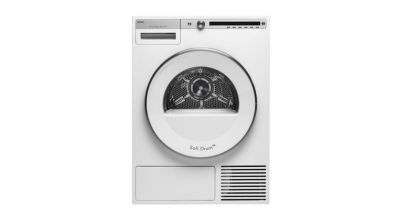
A large 10kg capacity heat pump dryer from Asko
The washer/dryer capacity mismatch
A point that people often overlook is that, ideally, your dryer’s capacity would be around 50% larger than that of your washing machine because laundry can weigh up to 50% more after being washed, even if it finishes with a high-speed spin cycle. The percentage of weight increase will vary according to the type of materials being washed, because things like denim and towels, for example, retain more water than polyester shirts or nylon active wear.
So, 9kg of dry laundry could weigh 13kg or more after washing. You won’t find a 13kg dryer, though: the largest capacity models are usually 9kg heat pump dryers, with a few 10kg models available.
Getting the right balance
If you have a large capacity washing machine of between 9 and 14kg, therefore, the way to avoid the washer/dryer capacity mismatch is, you guessed it, to wash smaller loads. While it’s tempting to stuff the washer to the max, loading it to about two-thirds full means you won't end up with more damp laundry than can fit into your dryer. You still have the extra capacity in the washing machine for when you need to wash large items like bedding or things you’re happy to let air dry.
“If you want to machine dry your entire laundry load, aim to load 9 and 10kg washers no more than two-thirds full.”
If you'd prefer to avoid guessing how much to load into your washing machine, and you’re a smaller household, you could choose a smaller capacity washer of 6 or 7kg. This would help ensure that a full load, when damp, roughly matches the capacity of a 10kg heat pump dryer. Either way, getting the right balance of wet washing weight and dryer capacity makes laundry days much easier.
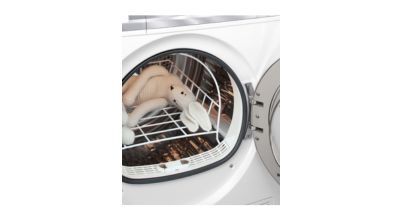
Delicate items can be dried using internal drying racks
Drying the delicates
Of course, you might not even want to machine dry all your laundry together, in which case it shouldn’t be an issue if the washed load is a bit heavier than your dryer’s capacity. Things like activewear, swimwear, or delicate fabrics air dry fairly quickly on a line, hanger or drying rack.
If you do want to machine dry delicate fabrics, they should be dried separately from the rest of the damp laundry anyway, using a special drying rack that fits inside a heat pump dryer. You can only dry a few things at a time in this way, so if you have a lot of delicate items and there’s no urgency, air drying can be the better option.
Space considerations
Choosing the right capacity is one thing, but you'll also need the dryer to fit your laundry space comfortably.
Heat pump dryers have a fairly standard width of around 60cm and a height of 85cm, regardless of capacity. The depth, however, can vary considerably. Because vented dryers tend to go no larger than 7kg, the following table gives the average depth ranges for different capacity heat pump dryers.
Table: Heat pump dryer dimensions
Dryer capacity | Depth | Width | Height |
|---|---|---|---|
7kg | 52-64cm | 60cm | 85cm |
8kg | 55-70cm | 60cm | 85cm |
9kg | 60-70cm | 60cm | 85cm |
10kg | 67-76cm | 60cm | 85cm |
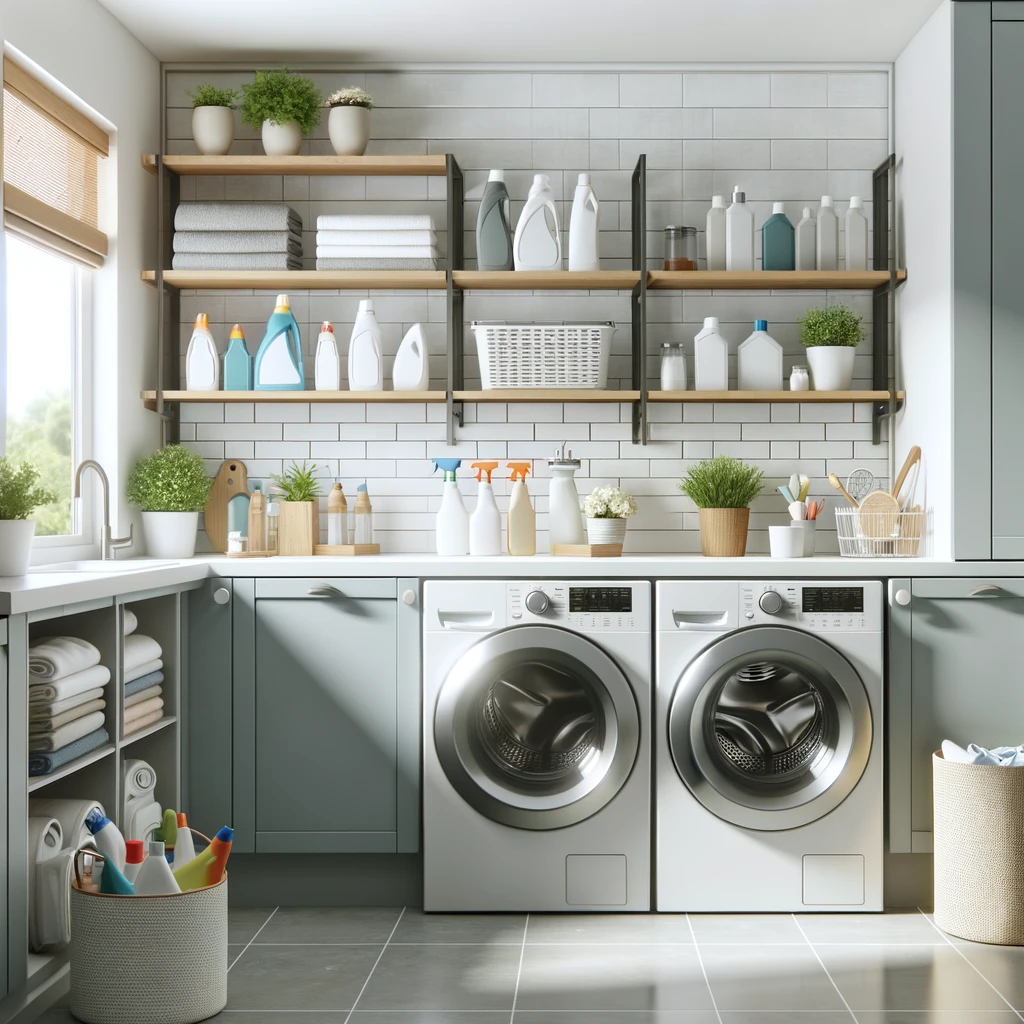
If you need a dryer to fit beneath a laundry benchtop, you should measure the depth of the benchtop and also allow a couple of centimetres for power leads and drainage hose at the rear before you choose a new dryer.
Appliances Online has filters that let you refine search results by depth, capacity and a range of other factors, so you can select a dryer that won’t protrude from under your benchtop. If floor space is an issue, remember that although you can’t wall mount heat pump dryers, they are usually stackable on top of front load washing machines, with an appropriate stacking kit.
Practical tips for efficient drying
To maximise your dryer's efficiency:
Clean the lint filter after every use to maintain proper airflow. It’s not dirty work and it only takes a few seconds.
Avoid overloading. Clothes need space to tumble for even drying. Overfilling can lead to longer drying times, wrinkles, and damp spots.
Look for a dryer with sensor drying functionality: most machines now have this. By preventing laundry from over-drying, it’s gentler on your clothes and prevents energy waste.
Use a drying rack for delicate items like wool, silk and lingerie that could be damaged by the tumbling motion of the dryer.
Give the dryer a head start by selecting a high spin cycle on the washing machine beforehand. This ensures that clothes come out primed for the dryer rather than dripping wet, which makes for shorter drying times.
Making the right choice
Take a little time to calculate the weekly volume of laundry your household generates (factoring in seasonal variations), and carefully measure your available laundry space before you buy, remembering to allow clearance space for door opening.
Any dryer can, in theory, handle your household’s drying needs - just not comfortably. Whether you choose a heat pump or vented model, buying the right size dryer to tackle the drying load in one go will save you from the excessive time, money and energy consumption of running multiple drying cycles.
Free, Next Day Delivery* for clothes dryers!
We deliver heat pump and vented clothes dryers, front and top load washers and the rest of our home appliances to 95% of Australians with Appliances Online's legendary FREE delivery - and we can usually get them to you by the next day (Mon-Fri) when they’re in stock (not a lot of retailers can say that!)
We even offer paid Same Day Delivery in metro NSW, Qld and Vic for in-stock items ordered by midday weekdays. If you need a few more tips on choosing the best dryer model for your laundry room, check out our Washer and Dryer Buying Guide, call our friendly team 24/7 on 1300 000 500 or message us via the chat icon at the bottom of your screen.

Oli is Appliances Online's editor and blogger, with almost two decades of lifestyle-related writing and editing to his name. With a mission to help you buy better and live smarter, his brand loyalty will forever belong to the appliance manufacturer that develops a self-emptying dishwasher.
Latest Articles
KITCHEN
1 JANUARY 2026
Our Top 10 best selling top mount fridges in Australia 2025
Your shortcut to finding the perfect top mount fridge.
KITCHEN
30 DECEMBER 2025
4 ways to make your water and ice taste better
Purer, cleaner-tasting drinks, made simple
HOME LIVING+
30 DECEMBER 2025
How to choose the best exercise equipment for a home gym
Happy 2026! Let's make it a healthy one.
LAUNDRY
26 DECEMBER 2025
5 of the best Boxing Day Sale 2025 Deals at Appliances Online
Refresh for less and start 2026 right!
More Like This
KITCHEN
1 JANUARY 2026
Our Top 10 best selling top mount fridges in Australia 2025
Your shortcut to finding the perfect top mount fridge.
KITCHEN
30 DECEMBER 2025
4 ways to make your water and ice taste better
Purer, cleaner-tasting drinks, made simple
HOME LIVING+
30 DECEMBER 2025
How to choose the best exercise equipment for a home gym
Happy 2026! Let's make it a healthy one.




